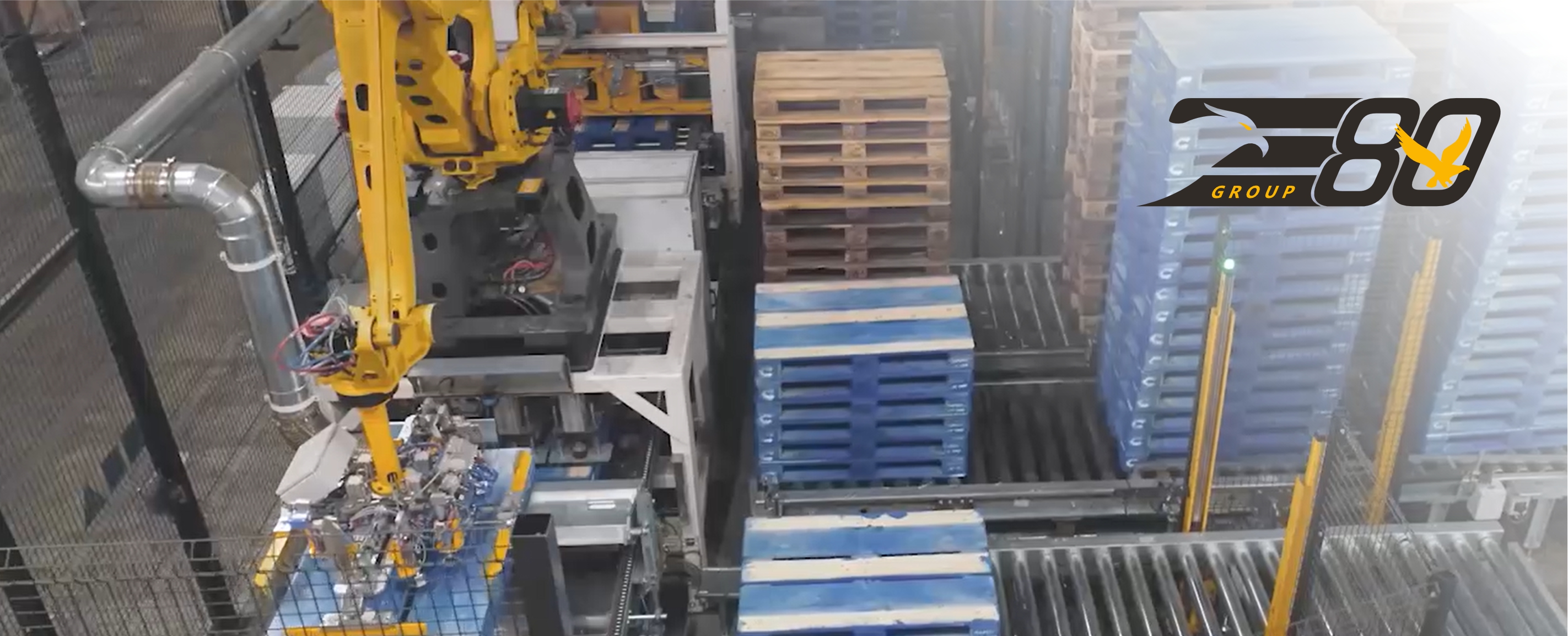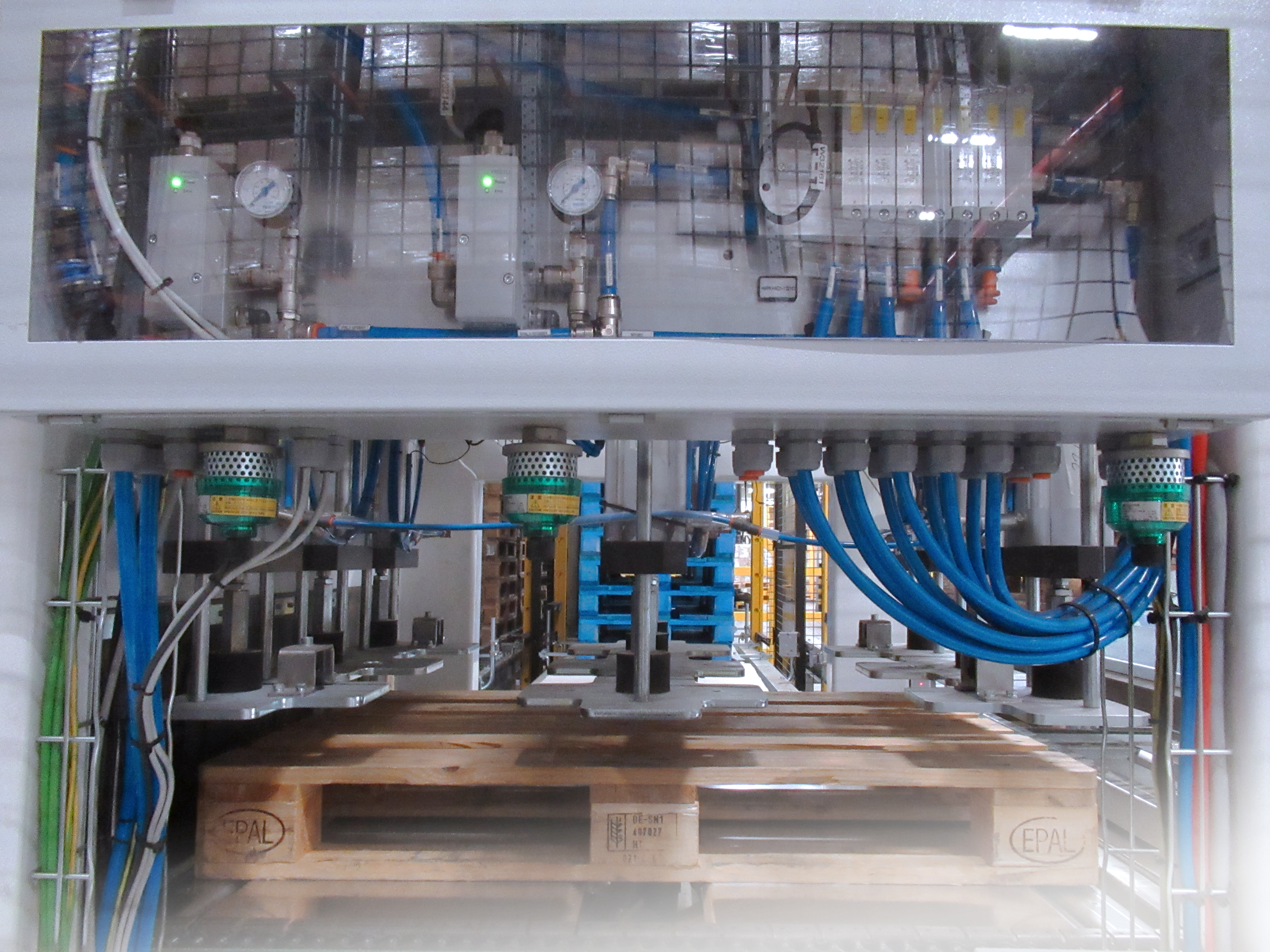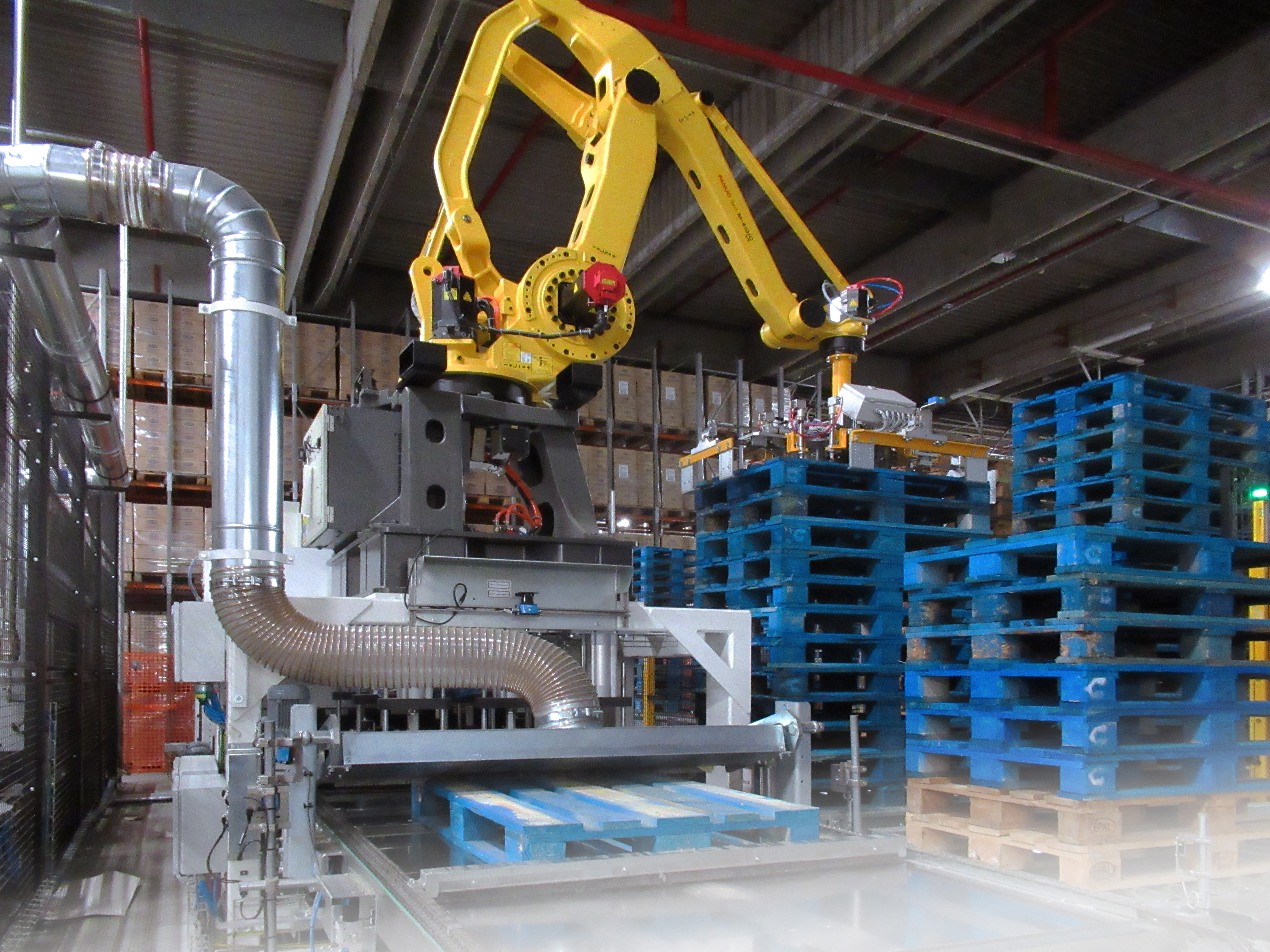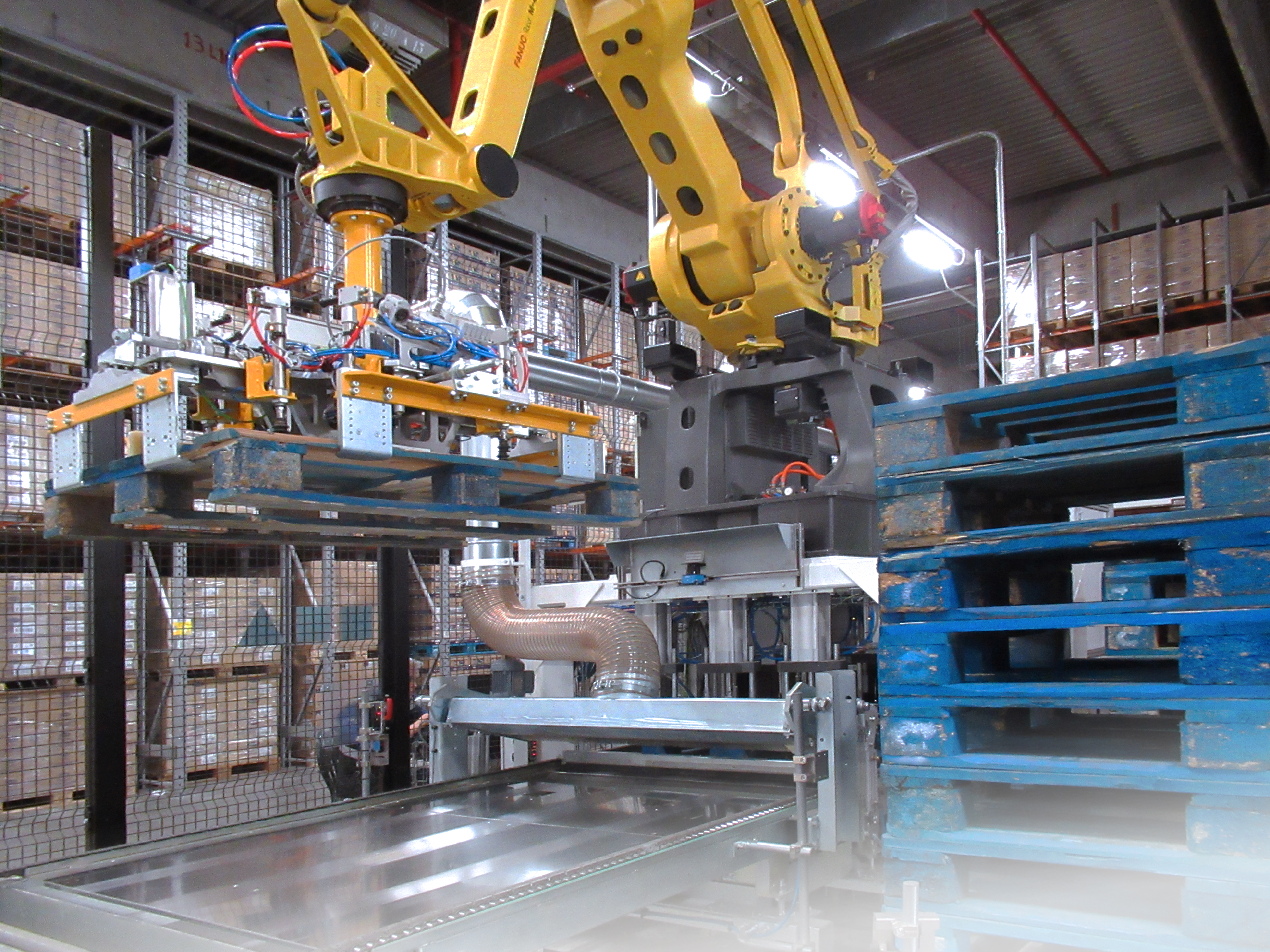Woodpecker 2: effective and accurate vision

Sixteen contracts awarded over the last two and a half years in various parts of the world: the latest version of our automatic pallet control system is enjoying total customer satisfaction. An interview with Mattia Davoli, System Engineering Manager.
Modular, scalable and flexible. The Woodpecker 2 automatic pallet control system was designed by our Group’s robotics division to meet new business needs. “Over time, the customers we work with may have to manage new products, semi-finished items, or raw materials using different pallets,” explains Mattia Davoli, System Engineering Manager, who followed the project as Product Manager. “Using artificial vision technology, we have succeeded in creating a system capable of responding to these complexities, continually adapting to production needs”.
When was Woodpecker created, and what are its functions?
“Woodpecker ensures, throughout the production process, the exclusive use of pallets that meet the customer’s needs. The system was added to the E80 Group range of solutions in the 2000s. The first model, although very precise and efficient, carried out only basic controls: dimensions of the lower boards, blocks presence and load resistance at various points. It was strictly mechanical, so changes to the settings required various manual operations. In fact, it needed specific checks for each type of pallet."

Why is the pallet an important component of the logistics process?
“The Woodpecker is placed precisely at the beginning of the process because the pallet is a component of the entire process. Once positioned, it accompanies the product from start to finish. It is therefore an important element that, with repeated use, can be subject to wear and tear or breakages, which are often difficult to detect for the human eye. And of course a damaged pallet can cause many problems, some of them major. For example, it can collapse during the palletizing phase or during laser-guided vehicle transportation; or it may break during storage. All of this can lead to line stoppage, loss of the product on board and, in automatic or vertical shelving warehouses, damage to more pallets. All to the detriment of our customers’ companies and their productivity. To avoid this, companies often perform optical and manual checks, pallet by pallet, a process that is not always effective”.

Why did you decide to introduce a new Woodpecker model?
“Woodpecker 2 was designed to meet business needs, in accordance with E80 solutions. We needed to develop a technologically advanced system that would minimize the problems associated with the use of non-compliant pallets. And so, from the end of 2015, over around six months, we collected customers’ feedback, in discussion with our production and logistics teams. Woodpecker 1 was reviewed: from the essential existing controls -, to those which were important but not performing sufficiently, to those not present but desirable. At the same time, we worked in close contact with a major pallet producer, with whom we developed a first prototype control station able to simulate what happens on pallets in automated warehouses. This gave us strategic information already in the design phase. Once the information was collected, it was combined with our know-how, and we started designing the Woodpecker 2”.

What are the features of the Woodpecker 2?
“In line with our objective of creating an advanced product able to adapt dynamically to multiple pallet types without requiring customization, we developed the Woodpecker to work with the most common pallet sizes in the world. The system we constructed is capable of controlling pallets from 800x600 up to a maximum of 1250x1165 without needing modifications, in part thanks to the use of artificial vision. A technology that has made it possible to eliminate most of the mechanical controls, with the exception of load resistance control, guaranteeing the necessary flexibility. Combining the use of laser illumination and the artificial vision system, we have created a “profiler” capable of carrying out a complete scan of the pallet, taking a photo of the pallet every 10 millimeters. The developed algorithm then transforms the optical measurement into a physical measure, checking the pallet compliance with top precision. In this way, the artificial vision technology ensures the customers can select, through an IT interface, the most suitable “control recipe” for their requirements. For each type of pallet the customer has complete freedom in establishing the load resistance range, the length, height and width of the pallet, the dimensions of the forking areas and the level of defectiveness of each individual board.
Step by step, the system arrives at the optimal mix, allowing the user to discard only the pallets that could have caused serious problems in production. Today, we are working to improve some aspects, but the new Woodpecker model - installed in various plants worldwide - is enjoying total customer satisfaction”.
Woodpecker from E80 Group on Vimeo.
